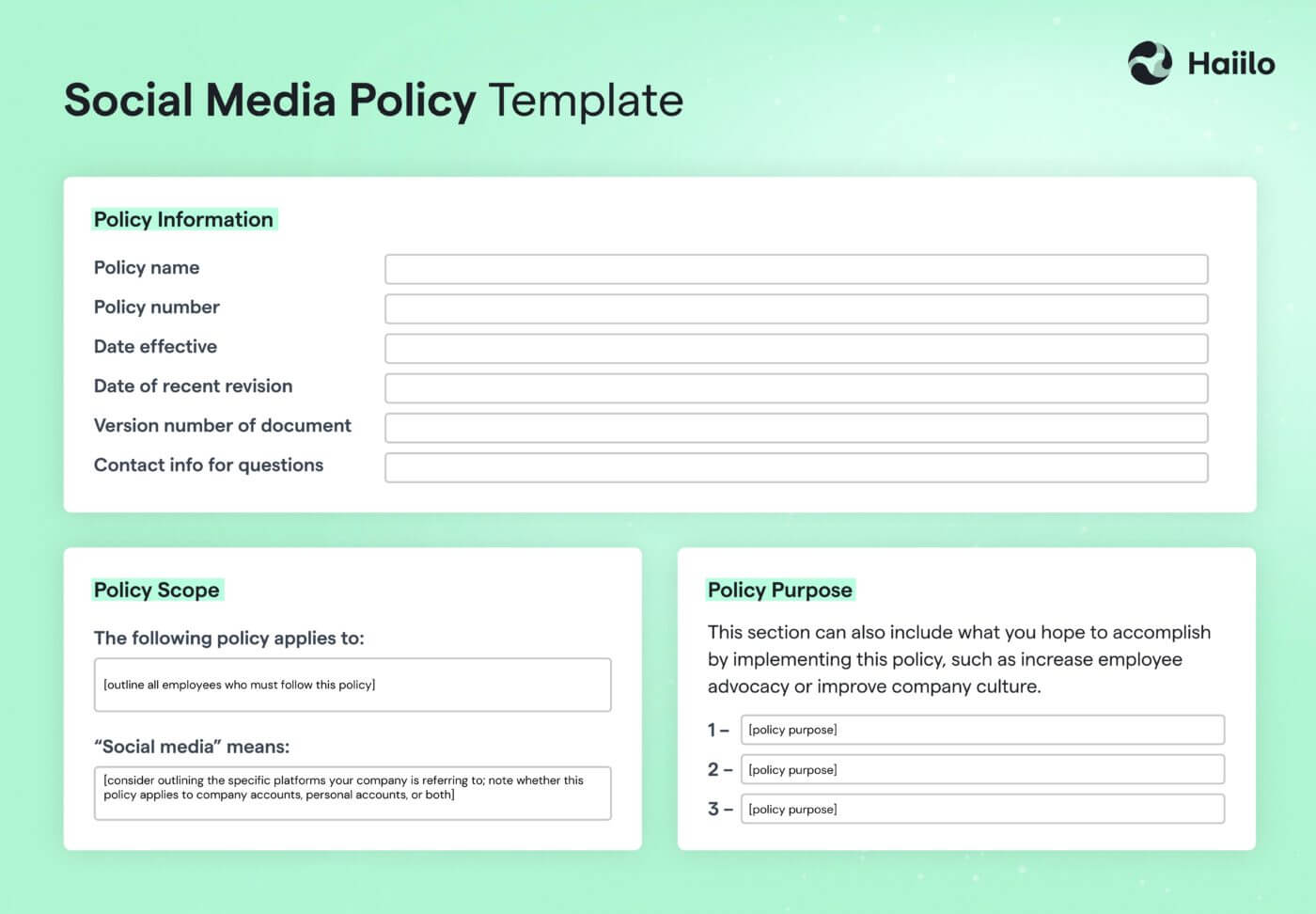Employer branding (EB) is one of the most important fields of talent acquisition (TA). With the increase of the war for talent across the world, employers are required to invest in their employer branding strategies more than ever before.
In this blog, we will go over the definition of employer branding, the benefits of building and managing a strong employer brand, and best practices for implementing and managing a successful EB strategy.

The Definition of Employer Branding
Employer brand is a term used to describe an organization’s reputation as an employer, while employer branding is a set of activities and campaigns employers use to promote their employer brands.
In other words, employer branding is everything an organization does to communicate and promote their organization’s employee value proposition.
Make it easy for your employees to contribute to your employer branding strategy with the right employee advocacy tools
Some of the most common employer branding activities include:
- Planning, defining, and implementing a clearly defined employer branding strategy
- Creating an attractive career site
- Using social media to share employees’ testimonials and success stories
- Managing employer review sites such as Glassdoor
- Creating and managing advanced profiles on job boards such as Indeed and Monster
- Creating and promoting attractive job descriptions and job ads
- Investing in candidates’ experience during application and selection processes
- Participating in local career fairs and other career events
As over 59% of employers say that employer branding represents one of the key components of the organization’s overall HR strategy. It is no surprise that almost every organization today invests in their employer brand.

Let’s now dig deeper into why employer branding is so important.
Why Implementing an Employer Branding Strategy is Important
Organizations across the world are investing in their employer brand more than ever before. As people are the single most important component of every organization’s success, it is normal that employers are doing everything in their power to attract new talent to their workplaces.
The following image shows the reasons why companies invest in employer branding activities.

But let’s take a look into some specific statistics that show the power of having a strong employer branding strategy, as well as the ROI of investing in employer branding activities.
1. More high-quality job applicants
There is a lot of existing research that proves that organizations with strong employer brands attract more talent to their organizations.
Here are just a few of them:
- 9 out of 10 candidates would apply to a job when it’s from an employer brand that’s actively maintained. (Workable)
- When making a decision on where to apply for a job, 84% of job seekers say the reputation of a company as an employer is important. (TalentNow)
- 80% of talent acquisition managers believe that employer branding has a significant impact on the ability to hire great talent. (LinkedIn)
- LinkedIn has also found that companies with strong employer brand see 50% more qualified applicants

2. Lower turnover rates
As seen earlier, companies that invest in various employer branding strategies are better at attracting talent that fits their organization’s core company values, mission, and vision. As a consequence, employee turnover can be reduced by 28% in those organizations.
💡 Related: Employee Retention: 14 Hacks to Stop Employees From Leaving.
3. Lower expenses
Because strong employer brands attract more job candidates, organizations that invest in their reputation also experience lower hiring costs.
Moreover, a negative reputation costs companies at least 10% more per hire.
4. More loyal customers
Employer brand and candidate experience can have a significant impact on customer acquisition and retention.
Candidates with poor experience during selection processes tend to stop buying the organization’s products and services. According to CareerArc, 64% of consumers have stopped purchasing a brand after hearing news of that company’s poor employee treatment.

5. Faster growth
People are the greatest assets an organization can have. Because employers with a strong reputation are more likely to hire top-notch talent, they also experience faster growth.
According to LinkedIn research, companies on LinkedIn with a strong Talent Brand Index (TBI) grew 20 % faster than their counterparts with a weaker talent brand.
6. Diversity and inclusion
Organizations that have a clear employer branding strategy are much better at attracting diverse talent to their organizations and strengthening their diversity and inclusion initiatives.
Employer branding channels such as social media offer a great opportunity for employers to showcase their corporate and social responsibility and build more diverse workplaces.
How to Build a Successful Employer Branding Strategy
Planning, building, implementing, and managing a successful talent acquisition strategy is not an easy job. Moreover, with the increase of various employer branding channels, many organizations now have designated EB teams.
There are no quick employer branding wins. Instead, employer branding is something that an organization needs to continuously manage.
Let’s now take a look into the must-follow steps for building the most successful employer branding strategy.
1. Define your EVP
Employee value proposition is what your organization stands for. It is the representation of your company’s core values, mission, vision, and culture. It is what differentiates you from your competitors, and what ultimately attracts talent to your company.
Yet, only 61% of companies have well-developed EVPs, and 44% of all CEOs don’t even know that their company utilizes EVPs

When defining EVP, it is important to stay realistic. Many organizations tend to make their value propositions sound very attractive to talent while the reality is not so bright. As a consequence, these organizations see low employee tenure and high turnover rates.
This is why the saying “Employer brand starts from within” is so popular. If you want to attract new talent to your organization, the prerequisite is to make your company a better place to work.
💡 Related: Employee Value Proposition: The Complete Guide to Building a Great EVP
2. Understand your TA challenges and future needs
When building an employer branding strategy, it is important to understand your current recruitment and hiring challenges. Additionally, you need to understand your current and future hiring needs in order to get the most out of your employer branding initiatives.
For example, if you know that attracting AI talent is your biggest challenge, it is logical that your EB efforts focus on these talents.
💡 Related: Recruitment vs. Talent Acquisition.
3. Define goals and objectives
In order to make the case for employer branding and measure the impact of EB, defining clear goals is a crucial part of every employer branding strategy.
Some of the most common employer branding goals include:
- Increase the number of high-quality candidates
- Increase traffic to the career site
- Increase engagement on EB-related social media posts
- Reduce time and cost per hire
- Boost employee engagement with employer branding initiatives
- Increase the number of job referrals
- Improve candidate experience and NPS
- Improve the offer acceptance rate
- Reduce application drop-off rate
- Increase Glassdoor ratings
4. Define your candidate personas
In order to make employer branding campaigns more personalized and efficient, it is important to define and understand your candidate personas. Candidate persona is the visual representation of your perfect job candidates. To define candidate personas, the best is to start from your own employees and answer questions such as:
- What generation do they belong to?
- What is important to them when it comes to their careers? Is it pay, growth and development, company culture, interesting projects, job flexibility, work environment, or something else?
- Where do they search for job openings?
- What kind of content about employers do they find valuable?
- Do they spend time on social media?
- Are they active or passive job seekers?
Once you have answers to these questions, it is much easier to define what kind of EB content should be created and which channels should that content be promoted via.
5. Optimize your employer branding channels
There are multiple different channels organizations use to promote their employer brand and get in front of their candidate personas.
According to LinkedIn, the top three channels organizations plan to extend their employer brand are company websites (69%), online professional networks (61%), social media (47%).

Therefore, it is crucial that organizations define and optimize their employer branding channels their candidate personas use to research potential future employers.
💡 Learn about what one of the world’s leading EB experts says about How to Build a Great Employer Brand on Social Media.
6. Engage your employees
The most effective employer branding initiatives are the ones that showcase your existing employees. According to LinkedIn, companies whose employees share their brand’s social content see a lift in the views that their job postings receive.
Engaging employees in your EB campaigns is crucial because employees have a big power to increase trust in the workplace. If you can encourage employees to share their own stories and become your employer brand ambassadors, your external communications will be much more credible and attractive to job seekers.
Here are a few examples of employee-generated content that candidates value:
- “A day in my organization” type of content featuring stories around employees’ nature of work and the organization’s work environment.
- “Why I applied and why I stay” stories around why employees decided to apply to this organization and why they stay.
- “How working in my company is different” stories around how working in your organization is different from their previous working experience.
These stories can be shared on social media posts, stories, live sessions, career sites, YouTube videos, local media publishers, events, and on many other channels.
💡 Related: What Is Social Recruiting and How to Build a Successful Strategy.
7. Engage the C-Suite
Leadership’s buy-in and engagement with employer branding initiatives is very important. It is crucial that they support those initiatives and act as role models to both employees and job candidates.
According to Glassdoor, 75% of U.S. respondents believe that companies whose C-Suite executives and leadership team use social media to communicate about their core mission, positive workplace culture, brand values, and purpose are more trustworthy.
💡 As employees play a big role in driving better employer branding results, also read about How to Communicate the ROI of Employee Advocacy to Your Executive Team.
8. Ensure positive candidate experience
Employer branding doesn’t stop once a candidate applies. Candidate experience in the selection process is also an important piece of employer branding.
According to Talent Adore, 78% of job candidates say the overall candidate experience they get is an indicator of how a company values its people. And those with a poor experience never apply to that organization’s job openings anymore.
Moreover, many of them stop buying that organization’s products and services and even tell their friends to do the same.
9. Measure the success and optimize based on insights
Measuring the impact of your EB initiatives is important for improving them in the future and getting the highest possible ROIs. To measure the success of your employer branding campaigns and initiatives, you should refer back to the defined goals and do the before and after analysis.
However, even though 96% of companies believe employer brand and reputation can positively or negatively impact revenue, less than half (44%) monitor that impact.

The Role of Employees in Building a Strong Employer Branding Strategy
HR, recruitment, and talent management departments are usually the ones responsible for developing employer branding strategies. Often, they also work in collaboration with marketing and communications teams to ensure consistent communication among employees and customers.
However, it is important that organizations understand that their employees are the most important employer brand ambassadors. According to Edelman Trust Barometer, employee voice is 3x more credible than the CEO’s when it comes to talking about working conditions in that company.
Moreover, employees rank highest as the most trusted and influential source of company news and information — outranking the company CEO, activist consumers, and the media spokesperson.
As Travis Wright sums it up nicely in an Inc. Magazine article:

As social media is a big driver for employer branding success, your employees’ engagement on social media is crucial for attracting new talent to your organization.
🎥 As one of the biggest prerequisites for every successful employee advocacy program is proper workplace communications, watch our masterclass on how to build a successful internal comms strategy
How to Drive Employer Brand Ambassadorship in Your Organization
According to previously mentioned research by LinkedIn, 68% of talent acquisition leaders agree that social professional networks are one of the most effective tools for spreading awareness about employer brand.
This is why many employers are trying to engage their employees to be their employer brand ambassadors on social media. 98% of employees use at least one social media site for personal use, of which 50% are already posting about their company.
To add, Weber Shandwick discovered that 21% of employees within organizations are estimated to be brand advocates and another 33% have the potential to be ones.

However, driving employee ambassadorship in large organizations is impossible without the right technology. This is why employers across the world are implementing employee advocacy solutions to strengthen their employer brands by encouraging their employees’ share of voice.
Employee communication and advocacy tools like Haiilo Stories and Haiilo Share empower organizations to strengthen their employer branding strategies by:
- Delivering personalized employer branding content relevant to employees’ job functions, locations, departments, and interests
- Making employer branding content easily accessible to employees by integrating and distributing it to your entire communications stack, such as Slack, Microsoft Teams, Yammer, SharePoint, Workplace by Facebook, Chatter, and others
- Encouraging and driving employee-generated employer branding content, and measuring the engagement and performance of internal contributors
- Ensuring the distribution of appropriate content using sophisticated approval streams and role-based permissions
- Ensuring deskless workforce’s engagement by delivering the content to employees’ smartphones
- Enabling employees to share the content to multiple social media platforms in a matter of seconds
- Gamifying and rewarding ambassadorship initiatives to motivate employees to participate
- Aligning employer branding campaigns with specific talent acquisition KPIs, and measuring the impact on the overall business success











